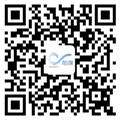前景提要
开源的物联网技术平台thingsboard安装测试及使用步骤
1. 安装Java1.8
2. 安装Maven
3. 安装node js
4. 安装git
5. 安装npm依赖 以管理员权限运行cmd,然后分别执行如下命令: npm install -g cross-env npm install -g webpack
6. 安装IDEA
IntelliJ IDEA :http://www.jetbrains.com/idea/download/download-thanks.html?platform=windowsZip
7. 安装postgreSQL数据库
下载地址: https://get.enterprisedb.com/postgresql/postgresql-9.4.19-2-windows.exe
Postgresql数据库安装过程,请将用户postgres的密码设置成 postgres。方便后续操作。
Postgresql数据库安装完成后,创建数据库thingsboard,所有者为postgres,然后用数据库工具(我用的是Navicat Premium 12)分别运行D:\thingsboard-develop-1.5\dao\src\main\resources\sql目录下schema-entities.sql、schema-ts.sql、 system-data.sql
8. 下载 thingsboard 源码
https://github.com/thingsboard/thingsboard
9. 编译源码 mvn clean install -DskipTests
如下则代表编译成功:
如果一次不成功则多试几次。
10. 导入IDEA,运行 ThingsboardServerApplication
需要安装的插件:IntelliJ Lombok plugin, Protobuf Support
11. API测试工具安装及需要的测试文件 (win10下Ubuntu子系统)
ubuntu:win10应用商店 Ubuntu 18.04 LTS
1. 测试coap协议:安装 coap-cli sudo npm install coap-cli -g
测试脚本: coap-js.sh # Set ThingsBoard host to "demo.thingsboard.io" or "localhost" THINGSBOARD_HOST="localhost" # Replace YOUR_ACCESS_TOKEN with one from Device details panel. ACCESS_TOKEN="i5OqJGOWWV6vWku8v25B" # Publish serial number and firmware version attributes cat attributes-data.json | coap post coap://$THINGSBOARD_HOST/api/v1/$ACCESS_TOKEN/attributes # Publish timeseries data as an object without timestamp (server-side timestamp will be used) cat telemetry-data.json | coap post coap://$THINGSBOARD_HOST/api/v1/$ACCESS_TOKEN/telemetry
2. 测试http协议:安装cURL sudo apt-get update sudo apt install curl
测试脚本: curl.sh # Set ThingsBoard host to "demo.thingsboard.io" or "localhost" THINGSBOARD_HOST="localhost" # Set ThingsBoard port to 80 or 8080 THINGSBOARD_PORT=8080 # Replace YOUR_ACCESS_TOKEN with one from Device details panel. ACCESS_TOKEN="i5OqJGOWWV6vWku8v25B" # Publish serial number and firmware version attributes # replace $THINGSBOARD_PORT with 8080 (in case of local installation) or 80 (in case of live-demo). curl -v -X POST -d @attributes-data.json http://$THINGSBOARD_HOST:$THINGSBOARD_PORT/api/v1/$ACCESS_TOKEN/attributes --header "Content-Type:application/json" # Publish timeseries data as an object without timestamp (server-side timestamp will be used) # replace $THINGSBOARD_PORT with 8080 (in case of local installation) or 80 (in case of live-demo). curl -v -X POST -d @telemetry-data.json http://$THINGSBOARD_HOST:$THINGSBOARD_PORT/api/v1/$ACCESS_TOKEN/telemetry --header "Content-Type:application/json"
3. 测试mqtt协议:安装 mqtt npm install mqtt -g
测试脚本:mqtt-js.sh #!/bin/sh # Set ThingsBoard host to "demo.thingsboard.io" or "localhost" export THINGSBOARD_HOST="localhost" # Replace YOUR_ACCESS_TOKEN with one from Device details panel. export ACCESS_TOKEN="i5OqJGOWWV6vWku8v25B" # Read serial number and firmware version attributes ATTRIBUTES=$( cat attributes-data.json ) export ATTRIBUTES # Read timeseries data as an object without timestamp (server-side timestamp will be used) TELEMETRY=$( cat telemetry-data.json ) export TELEMETRY # publish attributes and telemetry data via mqtt client node publish.js
4. 测试mqtt协议:安装 mosquitto
测试脚本:mosquitto.sh resources/mosquitto.shCopy resources/mosquitto.sh to clipboard #!/bin/sh # Set ThingsBoard host to "demo.thingsboard.io" or "localhost" THINGSBOARD_HOST="localhost" # Replace YOUR_ACCESS_TOKEN with one from Device details panel. ACCESS_TOKEN="i5OqJGOWWV6vWku8v25B" # Publish serial number and firmware version attributes mosquitto_pub -d -h "$THINGSBOARD_HOST" -t "v1/devices/me/attributes" -u "$ACCESS_TOKEN" -f "attributes-data.json" # Publish timeseries data as an object without timestamp (server-side timestamp will be used) mosquitto_pub -d -h "$THINGSBOARD_HOST" -t "v1/devices/me/telemetry" -u "$ACCESS_TOKEN" -f "telemetry-data.json"
测试脚本:attributes-data.json {"firmware_version":"1.0.1", "serial_number":"SN-001"}
测试脚本:telemetry-data.json {"temperature":21, "humidity":55.0, "active": false}
测试脚本:publish.js var mqtt = require('mqtt'); console.log('Connecting to: %s using access token: %s', process.env.THINGSBOARD_HOST, process.env.ACCESS_TOKEN); var client = mqtt.connect('mqtt://'+ process.env.THINGSBOARD_HOST,{ username: process.env.ACCESS_TOKEN }); client.on('connect', function () { console.log('Client connected!'); client.publish('v1/devices/me/attributes', process.env.ATTRIBUTES); console.log('Attributes published!'); client.publish('v1/devices/me/telemetry', process.env.TELEMETRY); console.log('Telemetry published!'); client.end(); });
测试方法:
1. 运行ubuntu terminal
2. 新建thingsboads文件夹 mkdir thingsboard
3. 将上述测试脚本添加到thingsboard文件加下
4. 配置.sh文件可执行权限 chmod +x *.sh
5. 执行测试,比如测试coap协议上传 ./coap-js.sh
返回成功标识 如下:
服务器接收到消息:
详细测试步骤,请参见官方文档: https://thingsboard.io/docs/getting-started-guides/helloworld/
12. 官方文档
https://thingsboard.io/docs/getting-started-guides/helloworld/
https://thingsboard.io/docs/api/
想了解传感器相关知识,关注微信公众号: 物联网智能传感器


 022-2345 2937
022-2345 2937 185 2247 0110
185 2247 0110 business@forenose.com
business@forenose.com























 022-2345 2937
022-2345 2937 185 2247 0110
185 2247 0110 business@forenose.com
business@forenose.com 前嗅大数据
前嗅大数据